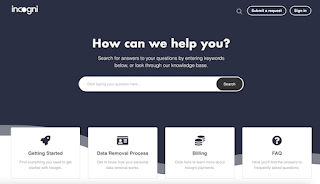Google Challenges ChatGPT in the Race for the Best AI Chatbot
Google Challenges ChatGPT in the Race for the Best AI Chatbot
Google's counterattack against ChatGPT in the competition for the best AI chatbot has intensified as the tech giant unveils its enhanced version of the chatbot, Bard. While Google initially lagged behind its rival OpenAI in the development of AI chatbots, the gap is narrowing as Bard makes significant strides.
Introduced on May 10th, Bard aims to offer users functionalities that are on par with or even better than ChatGPT. Although notable differences still exist between the two systems, experts believe that the race is beginning to stabilize.
According to Ricardo Carreon, the Director of Technology at Hexabit, an AI company based in Texas, United States, "ChatGPT-4 currently holds a clear advantage. Bard enters the competition as a challenger, not a leader. However, it is gradually closing the gap, setting the stage for a true rivalry between the platforms. Ultimately, the number of users each platform attracts will determine the winner."
While Bard's progress is commendable, it currently only supports instructions in English, Japanese, and Korean. The promised support for over 40 languages in the new version is yet to be implemented. A Google spokesperson stated, "As we responsibly develop Bard, we are progressively expanding access to more countries and regions in English. We will continue to expand over time."
Notably, Bard has an advantage over ChatGPT in terms of pricing. While ChatGPT requires a paid subscription of $20, Google's chatbot is freely available to users.
Bard's Advancements Compared to ChatGPT-4
1. Image Integration
A significant development in the latest version of Bard is the integration of images, a feature that was previously exclusive to OpenAI's ChatGPT. Bard has matched ChatGPT's multimodal capabilities, enabling it to analyze and interpret image content.
The basic functionality allows users to provide instructions based on an image, such as inquiring about the location of a piece of artwork shared on Instagram without explicitly mentioning the source. Additionally, Bard can provide image-based responses. For example, if asked about the most visited paintings in the Louvre Museum in Paris, Bard can swiftly respond with text and photos.
However, the innovation in AI goes beyond mere image search. As Mr. Carreon explains, "It's not just about searching for a photo but understanding its contents and performing specific actions based on that understanding." For instance, if presented with a photo containing eggs, tomatoes, and onions, Bard can suggest a Mexican-style egg recipe and display the recipe with the given ingredients. Bard goes beyond finding similar images; it comprehends their contents.
Google unveiled Bard's new features during its developer conference on May 10th. This capability, known as "multimodal functionality," allows users to communicate instructions to the chatbot not only through text but also via images. Additionally, Google has announced a forthcoming feature that involves AI-generated images by Adobe. Users will be able to request an image with specific elements, such as their pet wearing a birthday hat. Google is currently experimenting with this functionality, aiming to implement it gradually and responsibly.
2. Integration with Other Services
While gaining access to information through AI chatbots is valuable, Google takes it a step further in the new version of Bard. It now offers a direct output of information to its cloud services. For instance, users can send the content directly to their Gmail inbox if they ask Bard to draft a leave request for their boss. Similarly, the service integrates with Google Docs, allowing users to ask Bard to compose a song for their father.
In comparison, OpenAI's chatbot provides a copy-to-clipboard button as the only means of exporting content.





